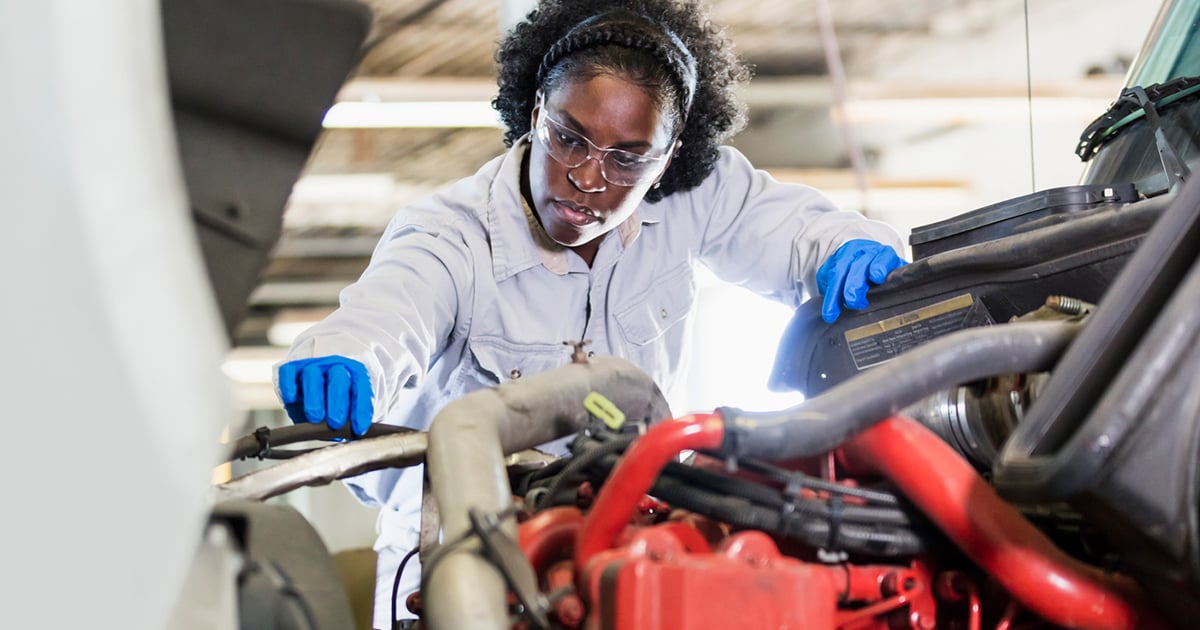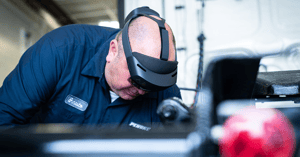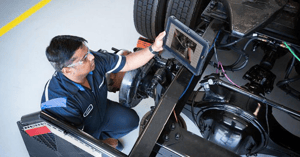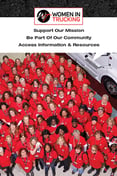The Next Generation of Truck Technician Training Is Here
by Holly Gerke, on Oct 27, 2021 7:42:48 AM

As global supply chains are challenged by widespread shortages of truck drivers, longshoremen and warehouse employees, transportation networks are also facing unmet demand for new maintenance technicians. According to research published by TechForce Foundation, 642,000 automotive, diesel and collision technicians will be needed between 2020 and 2024.
To withstand the pressures of a severely constrained labor market, our industry will need to appeal to a generation of digital natives who seek fulfillment, novelty and innovation in their chosen career paths. This doesn’t just impact how we recruit – we need to reimagine how we educate our associates, retain talent, and elevate the narrative around these skilled professions.
 This September, Penske was proud to unveil a cutting-edge augmented reality (AR) program to train our next generation of truck maintenance technicians. By empowering instructors to provide live, virtual training, enhanced by new technology and software, we are very literally giving technicians a new perspective on maintenance skills.
This September, Penske was proud to unveil a cutting-edge augmented reality (AR) program to train our next generation of truck maintenance technicians. By empowering instructors to provide live, virtual training, enhanced by new technology and software, we are very literally giving technicians a new perspective on maintenance skills.
Here’s how it works:
A Penske technical trainer positioned at a truck provides live instruction while wearing a Microsoft HoloLens 2 device.
A small group of technicians at several other Penske facilities, each on their own, follow along on their tablets while stationed next to a similar vehicle for the practice repair.
 Design Interactive’s ClassroomXR™ software provides a virtual classroom experience, allowing the technicians to see what the trainer sees. There is two-way audio, a live chat box, training manuals and photo guides to complement the lesson. Additional features on Design Interactive’s XRMentor™ platform enable technicians to work through the sessions in real time alongside the trainer.
Design Interactive’s ClassroomXR™ software provides a virtual classroom experience, allowing the technicians to see what the trainer sees. There is two-way audio, a live chat box, training manuals and photo guides to complement the lesson. Additional features on Design Interactive’s XRMentor™ platform enable technicians to work through the sessions in real time alongside the trainer.
This one-to-many model gives technicians an immersive training experience from Penske facilities across the country. They can apply what they’ve learned immediately, building strong foundational skills for critical tasks like brake inspection. We can reach a larger number of technicians in the field quicker, boost the consistency and scalability of our training, and keep pace with evolving needs.
Additionally, this model doesn’t require us to overhaul our training methods or outfit every technician with high-tech goggles. We can equip a fixed number of instructors while leveraging the devices that our technicians already use on a daily basis. And by complementing — not replacing — in-person instruction, we are adding new dimension to an already robust training program.
Most importantly, we’re showing new technicians that we are seriously invested in their success.
Technicians of all backgrounds are responding positively to our pilot program, whether they’re fresh out of technical school or 20 years removed from their high school graduation. They report a more personalized experience, even though sessions are shared among several associates, and they feel like they are on the cutting edge of their industry.
The success of our pilot program demonstrates that we need to approach training with the same level of innovative intensity that gave us advanced tooling and diagnostic equipment, sleek customer interfaces and supply chain visibility software. We can’t bring our fleets, shops and warehouses into the 21st century while we continue to recruit and train our workforce like it’s 1999.
This is bigger than one training program at one company. If more businesses embrace high-tech training solutions, together we can build a community that exchanges best practices and tells new stories about professions that, admittedly, face some image issues. As the labor market grows increasingly competitive, we need to defy the negative stereotypes attached to maintenance careers.
I encourage transportation leaders to approach new training technologies with an open mind, and to challenge yourself to consider possible use cases. The applications you discover may surprise you, and they will be unique to your organization’s strategic goals.
Don’t wait to research emerging technologies. For my team, this started with a trade show demonstration, but for you it may begin with a simple web search.
Ask potential partners how their technologies can meet your company’s needs, and find one who will see the big picture with you. Penske was immensely fortunate to work with Design Interactive, a woman-owned small business based in Florida, to stretch the capabilities of what their AR programs were designed to do. Their team brought an incredible energy to this work and shared our excitement for the future intersections of AR and trucking.
The process will not be linear. Allow yourself the confidence and the flexibility to fully realize the potential of these solutions, and give yourself plenty of grace.
Labor shortages can be frustrating, even frightening, but they present us with the opportunity to breathe new life into our industry. As your organization examines its recruitment and retention strategies in the days ahead, don’t discount the potential of new technologies to help us meet this moment together.
 |
Written By Holly Gerke, Vice President – Maintenance Training and Tech Development for Penske Truck Leasing. |
 Like this kind of content?
Like this kind of content?
As a member of the Women In Trucking Association, stay on top of emerging trends and business issues impacting transportation, logistics, and supply chain operations, learn the importance of gender diversity in the workplace and the need for more women drivers, and see best practices in encouraging the employment of women in the trucking industry. Learn More





